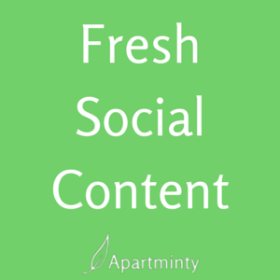Starting with the ground up, what can MF mgrs do with existing landscaping?
(Submitted by Elizabeth Madrigal)
- Heather Blume: You can start by examining your watering procedures – timing of watering, aim of sprinkler heads, leaving grass longer.
- Kim Madrigal: Landscaping is water intensive. Plant native vegetation.
- Kim Madrigal: Mature plants need less water than young plants. Ck yr watering schedule seasonally. Consider smart irrigation system.
- Elizabeth Madrigal: Local arboretums are great places to start, and local universities and plant nurseries.
- Heather Blume: I’ve heard great feedback on putting rain sensors on your property – $1500 to install and saves at least twice that the first year.
- Susan Welker: Also consider rain water catchment systems. 1″ of rain on 1000 SF equals 550 gallons of free water.
I am interested in hearing about electricity savings … what tips are available?
(Submitted by Jonathan Saar)
- Susan Welker: Replacing incandescent lighting with Fluorescent, adding insulation, occupancy sensors and low cost energy savers
- David Kotowski: Billing residents for use of their utilities also helps with conservation.
- Kim Madrigal: Motion sensors or vacancy sensors turn lights/appliances etc. off when no one is around. I use them in hallways, kids rms!
Low-hanging fruit … if I’m on a budget, what are some things I can do that will have the greatest impact for my dollar?
- Kim Madrigal: Replace incandescent bulbs w/ CFL. reset water heaters to 120 degrees, lower pool temp to 78, install lting controls.
- Kim Madrigal: Better manage vacant units, weather stripping of doors & windows, aerators, low flow fixtures will pay for themselves.
- Elizabeth Madrigal: One thing we forget is the HVAC system “tune up”, which can save 15 to 20% on an energy bill even with old equipment.
What can we do to go green in the leasing office? Has the paperless office finally arrived?
- Elizabeth Madrigal: Let staff know you care about green management – and train them in it – and your NOI will increase. It’s good green economics.
- Heather Blume: Stop printing every report every week for starters. U don’t need physical back ups if you do a full system back up weekly.
- Christian Flickinger: VG (Village Green) doing paperless applications & leasing, also moving internal processes paperless. reports being send in PDF to corporate/owners.
- Gillian Luce: Recycle, change thermostat temp, shut-down computer & turn off lights. Tips 4 Going Green at the Office http://bit.ly/dCrkJ6
- Will Clark: Electronic check registry, file invoices remotely, accept automatic rent payments, reduce waste and hot machinery.
- Mike Whaling: Why not send an intro email w/ links to resources on your website? Get rid of the paper & boost SEO…
- Charity Hisle: Many of our customers use their blogs as newsletters rather than printing & distributing or emailing.
Let’s talk resident education. What works best? How can we make residents more aware of their energy/resource usage?
- Jason Tripp: Resident education is the hardest, especially as it relates to Sustainable Development…the two aren’t always in sync.
- Resite Online: Resident portals and blogs are great places to post educational information for residents.
What are the most common misconceptions about “going green” that you hear from residents? From others in your company?
- Resite Online: People tend to see the costs before the benefits.
- Kim Madrigal: Misconception? That technology will fix things! Tech will help but it will require behavior mods as well.
- Heather Blume: “it’s too expensive” “takes lots of work” “it will b a long process” “it will cost us more 2 go green b/c it’s not easy”
- Jason Tripp: Most of it relates to the tangibility – are floors recycled, is a material green, perceptions on paper.
- David Kotowski: “Going Green” is pretty much just using less paper.
- Jason Tripp: Cost is hurdle – people want a green apartment, but aren’t willing to pay the premium. We have to appeal to wallets and hearts.
- Kim Madrigal: People aren’t often aware of the link between water and energy. Using less water means using less energy too.
- Kim Madrigal: Use 0.5 or 0.75 aerators on faucets including kitchens! In showers use 1.5 – 1.75 low flow heads. These are better than min stds.
More great tips shared along the way:
- Susan Welker, AIA: Those most ROI I would think in green apartments is insulation. Inexpensive and pays for itself in 1 year or less!
- Elizabeth Madrigal: If you haven’t seen the DSIRE website, check it out as it is a searchable state website for incentives, rebates, tax credits, etc.
- Kim Madrigal: Beware “green products”. To Quote @mfguide Reduce. Reduce. Reduce. We actually have to stop consuming so much.
- Kim Madrigal: Green leases? Be sure you have clause that allows you access to energy usage. May not need it now, but will in future.
- David Kotowski: We’ve started giving out reusable shopping bags as move-in gifts.
- Elizabeth Madrigal: We can’t control much in life, but we can control our own actions, reactions and behaviors. Living a sustainable life matters.
- Kim Madrigal: Check out the OccuSmart sensor for interior hallways, Vending Miser for vending machines.
More resources:
- Full transcript from the discussion
- GreenLandlady
- DSIRE (Database of State Incentives for Renewables & Efficiency)
What are you doing to ‘go green’ at your company? Do you have a resident education program focused on sustainable living? What other ideas or suggestions do you have to help save energy, water and other resources?
Thanks again to Kim and Elizabeth Madrigal for your time and expertise!
This week’s #AptChat included 294 tweets from 38 different contributors.




